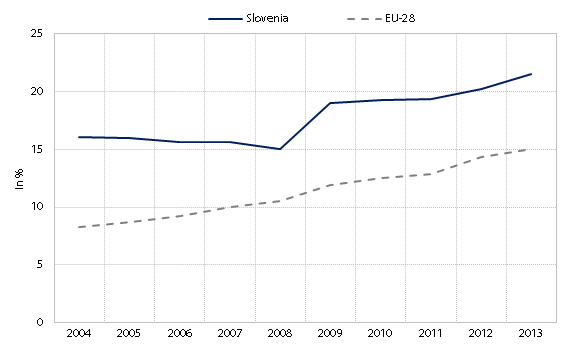ENVIRONMENTAL WELL-BEING - Energy sources
The indicator Share of renewables in gross final energy consumption shows to what extent energy needs in a country are met with renewable energy sources. Unlike non-renewable sources, exploitation of renewable energy sources reduces the potential for energy supply of future generations much less and helps reduce the climate impact. Growth of the indicator has a positive impact on well-being of future generations.
Figure: Share of renewables in gross final energy consumption, Slovenia and the EU, 2004−2013 (in %)

Source of data: SURS, Eurostat.
In Slovenia the share of renewable energy increased to 21.5% in 2013. Compared to the EU average (15% in 2013), Slovenia covers a larger share of its energy needs with renewable sources, a significant contribution coming from its natural features. The use of renewable energy sources also reflects supporting policies of countries. In the EU overall the share of renewables in final energy consumption has been increasing since 2004. With some annual variations, in Slovenia it has been increasing since 2009. This was partly due to low demand for other energy products since the onset of the economic crisis, which in the absence of the pressure to use energy replaced non-renewable sources with renewable ones.
Total energy consumption has been decreasing since 2008 both in Slovenia and the EU. The decrease in total energy consumption is the result of lower economic activity due to the crisis and the implementation of efficient energy use measures.
